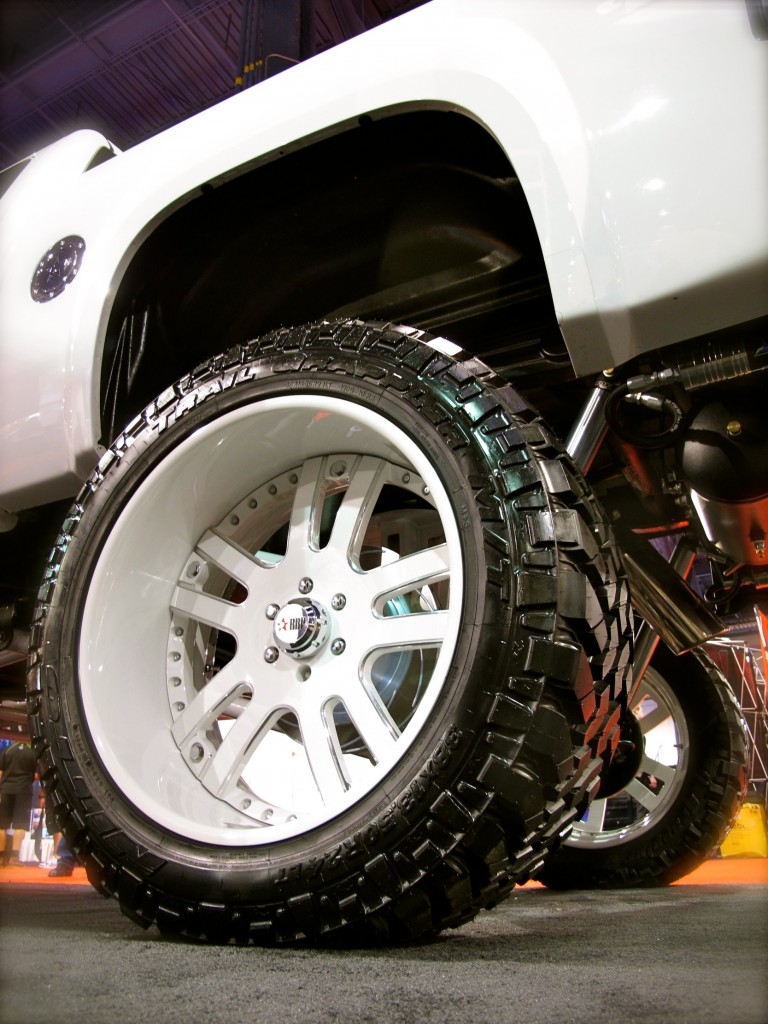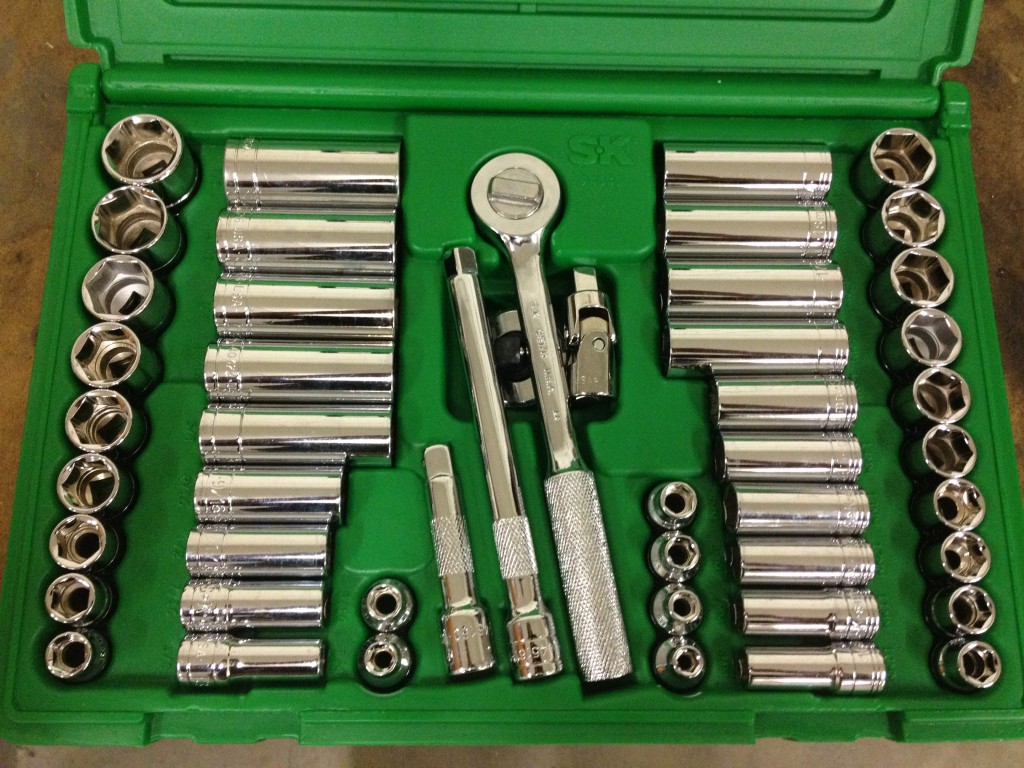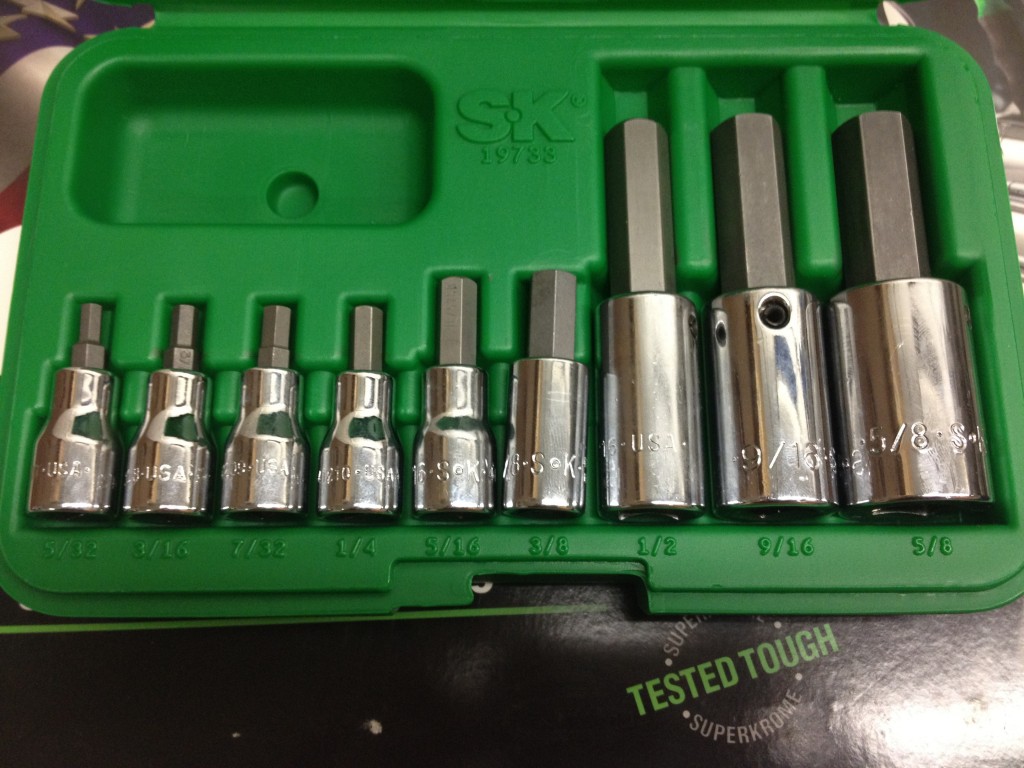
A thread on the expeditionportal.com prompted this post. A gentleman asked how much sidewall is enough as he’s planning to use 37-inch tires on 20-inch wheels on a full-size diesel pickup. He asked if it would be worth it to spend money on 17-inch wheels and tires for occasional, recreational use, while using his twenties for daily driving. My answer to his question was no, it’s probably not worth it just for vacations. Though for me, it would be very desirable to run 17-inch tires & wheels everyday. His questions spurred me to expound on this important subject as it relates to overland travel for the first time here on RoadTraveler.net.
A Sidewall Baseline For 4WDs
I’m not an advocate of tall wheels if they are not necessary, of course many trucks these days have a minimum wheel diameter of 17-inches because the brakes are so large, and wheels between 18–20 inches have become fashionable. A tall wheel simply means less tire sidewall with which to perform off-highway duties for a given tire diameter. Taller sidewalls help a truck ride above the rocks and obstacles, all of the truck, including the wheels. Low-profile tires are needlessly vulnerable to trail damage, offer less flex, and are generally less versatile. It’s often forgotten, misunderstood, or unappreciated that tires are part of a vehicle’s suspension.
Using a 16-inch wheel with a 33-inch tire offers a sidewall height of 8.5-inches, (33 –16)/2 = 8.5″, a good baseline. We could get more technical and use the static radius, but it’s easier to simply use the manufacturers’ stated diameter, and it’s close enough for this topic. The lower half is what we drive on, what matters, and it provides more or less flex depending on its height and design. Sidewall flex can be a positive or a negative depending on your truck, the terrain, and your needs and preferences. In theory, a 35-inch tire on an 18-inch wheel, a 37-inch tire on a 20-inch wheel, as well as my thirty-three on a sixteen example, all have a lower sidewall height of approx. 8.5-inches.
If we are interested in the clearance we get from a particular tire size, specific tires need to be researched using the manufacturer’s data to determine the true diameter. Some tires will be very close to their stated height, 35-inches for example, while some are a half-inch short. One half-inch less diameter means 1/4-inch less sidewall on the bottom, a difference that can easily be measured and felt depending on the sensitivity of your butt dyno.
Load Range and Tire Construction
A taller, higher aspect ratio, more flexible sidewall is helpful for off-highway travel for both ride quality and traction. One exception being that a stiffer (and tall) sidewall may be more resistant to puncture. A shorter and/or stiffer sidewall is generally less desirable off-highway. For heavy hauling and towing, a shorter, stiffer sidewall can be helpful, as less movement and flex generates less heat. However, on several occasions I’ve successfully and safely used relatively flexible, load-range D light-truck tires with 2-ply sidewalls to haul a couple tons (didn’t exceed tire capacity or GAWR), and have also towed several tons. I’ve also traveled many hundreds of miles (if not thousands) off-highway over the last two decades, mostly on load-range D tires. Have I had sidewall cuts? Of course, but only two that immediately come to mind, and one was last year. If you are concerned about sidewall punctures, there are some excellent, flexible load-range D tires with 3-ply sidewalls in some popular sizes. Your application and performance bias will help you choose your tires. There are many excellent, heavy-duty tires to choose from these days, some in load-range C, D, and E.
I acknowledge that load-range D tires are probably a dying breed, the writing has been on the sidewall for a while. The proliferation of heavy-duty pickups, particularly diesels, over the last several years has greatly influenced the tire aftermarket. Unfortunately even half-ton trucks and lightweight Jeeps are sometimes needlessly sold with load-range E tires, my 2005 Jeep Rubicon and 2011 Tundra are perfect examples. My coil-sprung, 103-inch wheelbase, 2005 Unlimited was a nice riding Jeep, with the exception of the needlessly stiff Goodyear Wrangler MT/R in a 245/75R16E (a relatively short sidewall). I liked the way the Jeep rode with only 25-PSI in the tires. After changing to taller load-range D tires, the combination of a taller sidewall and load-range D made the Jeep ride and perform better at all pressures, on- and off-highway.
My point is that as with many things these days, it’s easy to needlessly go to extremes and forget balance. All-steel, load-range F or G, Michelin military tires are not the best choice for your 3,000-pound soft-top YJ Wrangler, or for your heavy-duty pickup.
Not all load-range E tires are created equal, some are designed to flex better than others when pressures are reduced. My experience with both the BF Goodrich KM2 and All-Terrain T/A in load-range E indicates these tires are not overly stiff and flex well.

Tire Testing
I recently tested two sets of 33-inch tires, both the same size with reasonable 70% aspect ratios, on the same OE wheels, but with different load ratings and sidewall construction. This latest trial simply reinforced the potential differences in ride quality and overall performance between some tires with different load ranges, sidewall designs, or heights. The difference was enough that I was comfortable running considerably more PSI in the lighter, more flexible tire, but wanted to run minimal PSI in the much firmer tire to improve daily-driving ride quality, just like with the Jeep example above. Increasing PSI on a flexible tire will reduce flex and help it run cooler on-highway if desired.
One advantage to more flexible tires is there’s often less need to reduce pressures as much off-highway as with a stiffer tire. Tires that flex, conform, and ride better at a given pressure, and are sometimes so pleasant that for short drives on easy dirt roads with few rocks, there may be no need or desire to immediately lower pressures. Conversely, tires with very stiff construction can scream dump the pressure, at the first sign of anything bigger than a pebble, particularly on a firmly sprung heavy-duty pickup with no load.
Reinforcing Sidewall Lessons
Another, older example are tests I conducted a few years ago, using two different sizes of the same tire, on two sets of Jeep Rubicon Moab wheels, on the same vehicle, with the same air pressure in both: Toyo Open Country MT LT265/75R16E vs. LT285/75R16E. Both tires have a 7-ply tread and 3-ply sidewall, are load-range E, have similar load capacities, and are very stiff designs. With 0.6″ additional lower sidewall, the taller 285s rode better on/off-road and flexed a little better when aired-down. This was experienced several times as both sets were in my fleet for a while and used on more than one 4WD. The stiff Toyo MT needs substantial deflation to obtain adequate deformation and ride quality off-highway, one of the tradeoffs for the Toyo’s very rugged design. The noticeable lack of flexibility from this otherwise excellent tire is a big negative for my all-around use. If you want a mud tire with less flex for very heavy hauling, or you don’t mind a firmer ride, the Toyo MT can be a great choice.
Flexibility and sidewall height, it matters.
Copyright © 2012 James Langan



